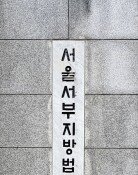KFB to suck up more public funds
KFB to suck up more public funds
Posted August. 17, 2000 12:41,
Korea First Bank, which was sold to Newbridge Capital of the United States, reported 3.53 trillion won in non-performing loans as of the end of June and has asked for an additional public fund injection of 2.66 trillion won to make provisions against the NPLs, the Korea Deposit Insurance Corp. announced Wednesday.
In selling KFB at the end of 1999, the government agreed to offer Newbridge Capital with reserve for bad-debt allowance or put-back options with which the foreign investor can demand compensation for all losses resulting from loans made prior to the sale for two years (three years for workout loans). KFB has exercised its put-back option.
¡°In addition to increased Daewoo-related NPLs, application of forward-looking criteria considering debt-redemption capability in the future has pushed up the amount of reserve for bad-debt provision,¡± the bank reported.
The amount of NPLs reported by the KFB includes 2.13 trillion won for Daewoo-related NPLs; 928.3 billion won for non-Daewoo workout loans; 293.6 billion won for loans related to court receivership and court mediation; and 296.9 billion won for other reasons.
The Ministry of Finance and Economy and the KDIC seem to have decided that purchasing all NPLs of KFB is a better idea than making provisions against the NPLs accounting for 75% of the bank¡¯s total loans. Accordingly, the additional public fund injection for KFB will likely reach the 3.5 trillion won level.
When adding 12.3 trillion won that the government already has poured into the bank, the total public funds soaked into the KFB will increase to 15.8 trillion won. Moreover, with 1.5 trillion won scheduled to be injected by 2002, the public funds absorbed by the KFB will total 17.3 trillion won.







